Aftermarket brake pads from NISSIN that meet the strict European safety standard R90 and offer excellent control!
NISSIN, known for manufacturing stock brake parts, have released their own brand of brake pads for aftermarket use. The NISSIN Premium Semi-Metallic Brake Pad was developed for touring and street use, and is said to have a higher level of performance than the company's conventional products. Webike staff member, Yasuo, who is in charge of reviews, tested them on a CB400SF and here's what he thought.
Made in Japan to strict safety standards
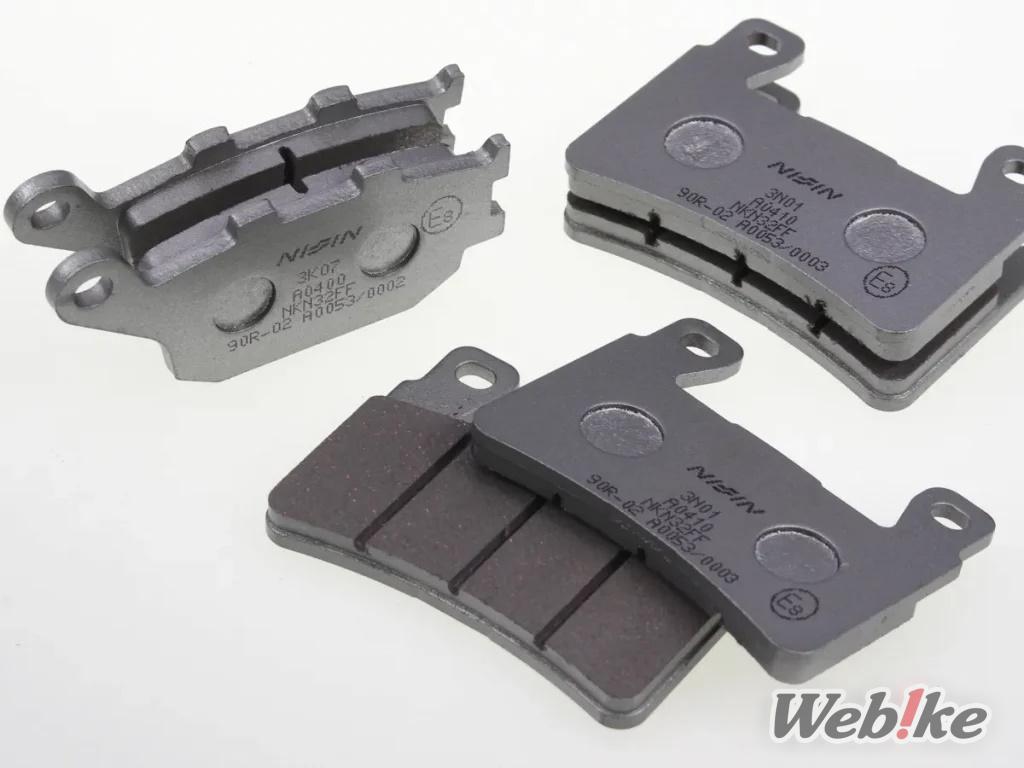
NISSIN is one of the world's leading brands for motorcycle brake products, boasting a high share of the factory installed market. Regardless of displacement or type of bike, it is fair to say that motorcycles equipped with NISSIN brakes are a mainstay. On the other hand, they are also known as a manufacturer of master cylinders and calipers, and with the merger of Nissin Kogyo into Hitachi Astemo in 2021, the development of aftermarket products has been accelerating, and the company has now launched a new lineup of aftermarket brake pads. What's more, these brake pads are for street-use, which is a big deal. The NISSIN brand itself already has a strong image of safety and security, but now with an eye on global sales, they have acquired certification under ECE R90, Europe's strict brake safety standard. And for more good news, the product lineup for these new brake pads already includes 49 types, which are compatible with a wide range of models worldwide, including those that use calipers made by other manufacturers.
In order to check out this new product, we decided to replace the stock pads and test the feeling of the new pads. Expectations are high!
Feeling on the CB400SF test bike
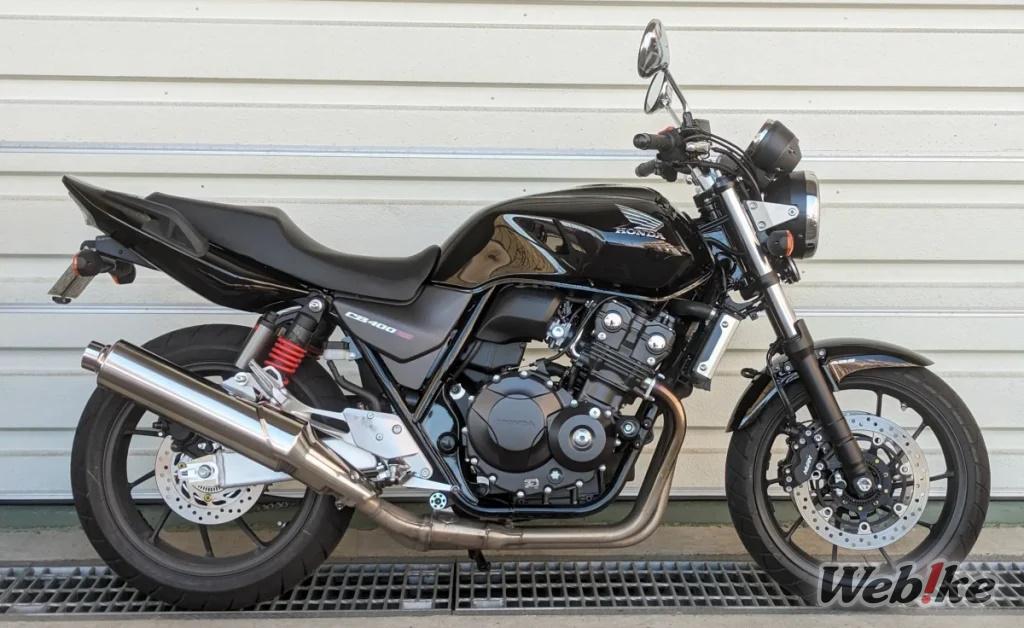
For this test, a CB400SF with low mileage was used. The bike was originally equipped with NISSIN calipers and factory installed NISSIN brake pads. The stock brake pads are high-grade sintered (metal). When we checked the brake feeling with the stock pads, we found that it was gentle at first, but as the rider's grip is tightened, the braking force increases in proportion to the grip force, and when braking hard, you can feel a hard abrasiveness and there is a slight operating noise. We proceeded with the replacement of both front and rear, looking forward to feeling the difference that semi-metallic pads would bring.
Features of NISSIN Premium Semi-Metallic Pads
-Brake pads that are ideal for touring and street use from the NISSIN brand.
-Not only braking power but also control, all performance is high level and well balanced.
-Newly developed abrasive material designed for touring and street use is used.
Replacing the pads is a great opportunity to inspect and clean thoroughly
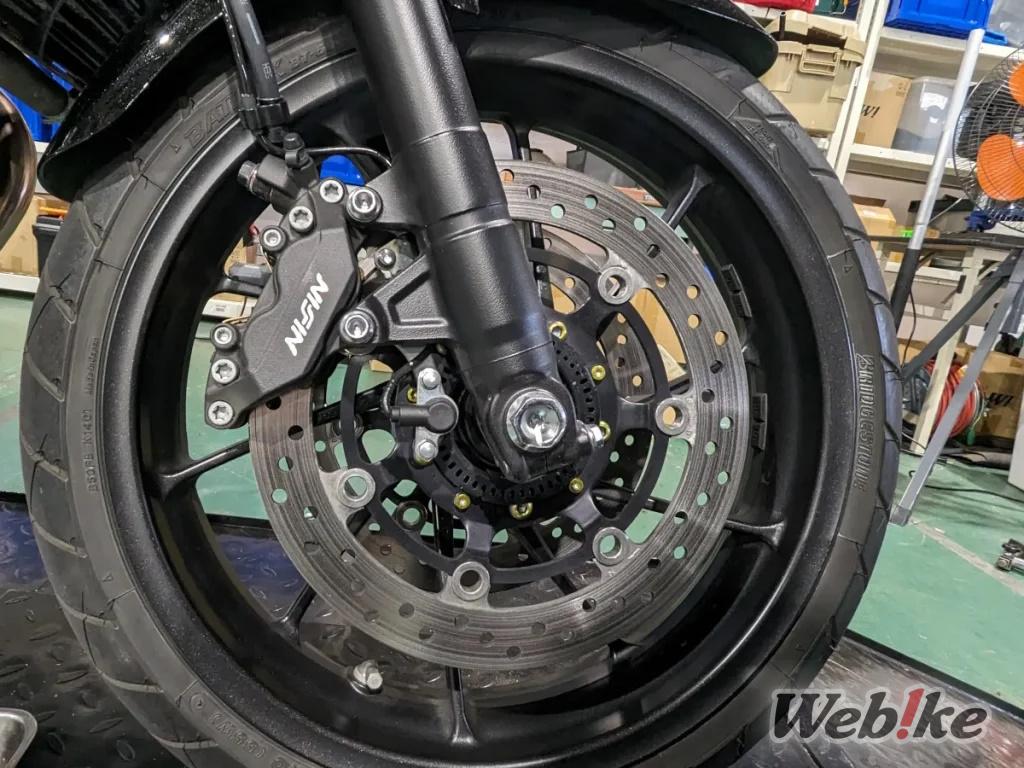
Because the bike used for this comparison test had only been ridden about 2000km, the stock pads were not worn or dirty, and the caliper pistons and pad pins were in relatively clean condition. Even so, the pistons were rotated to remove all the dirt from the circumference, then gently pushed back to clean the pad pins and pad springs. A very small amount of copper grease was applied to the pad pin threads to prevent galling. As for the back plates, since the rear one contains a heat shield sheet, the stock plate was used.
When replacing the pads, it is recommended to replace the fluid and inspect and perform maintenance on the lever axle. Especially for bikes that are very old or have been ridden long distances, it would be a good idea to take this opportunity to bring the performance back up to speed by putting in the effort to clean and maintain as above. For single-piston slide type brakes, such as the rear brake in this case, it is also important to inspect and maintain the condition of the slide pin and rubber boot.
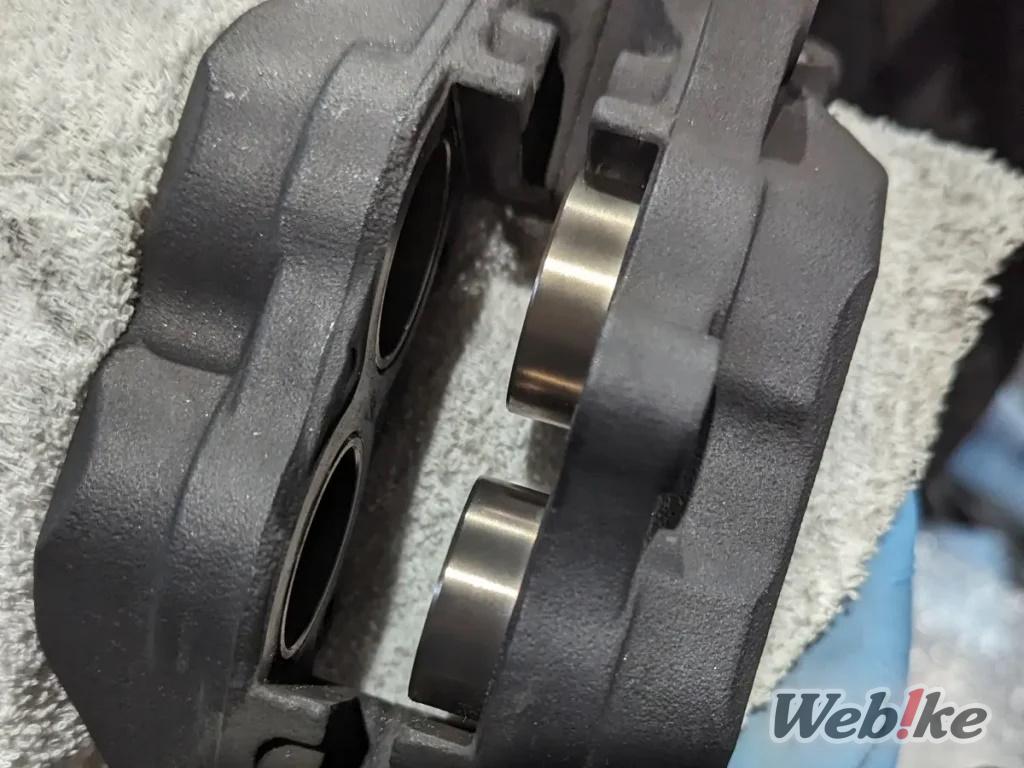
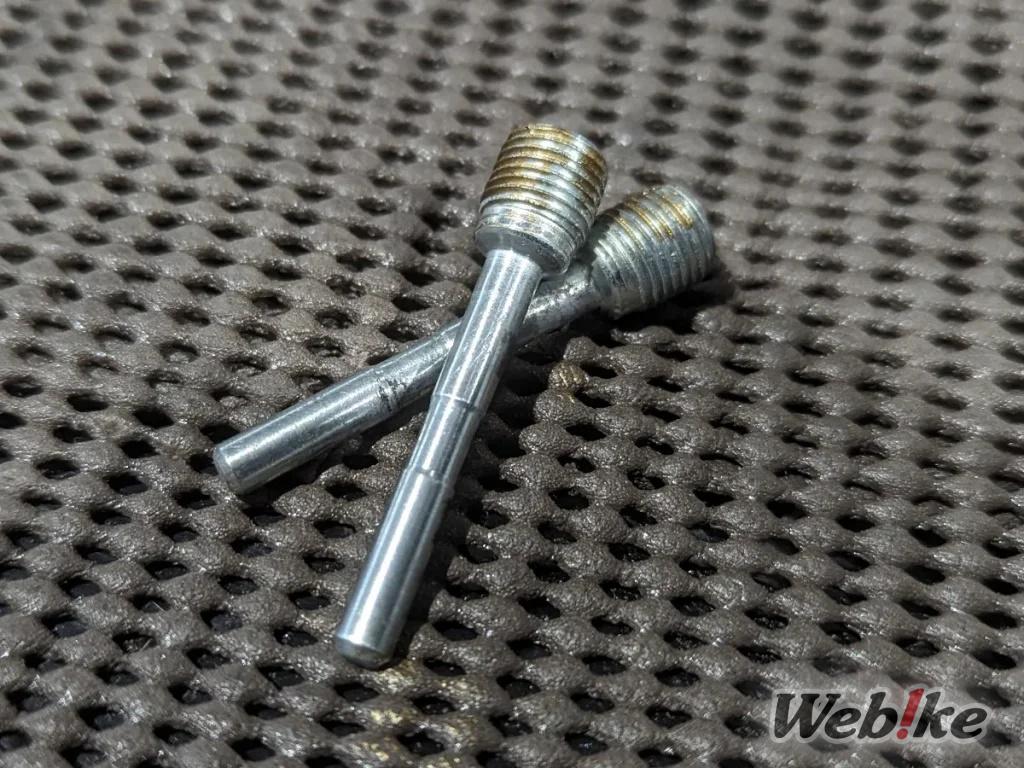
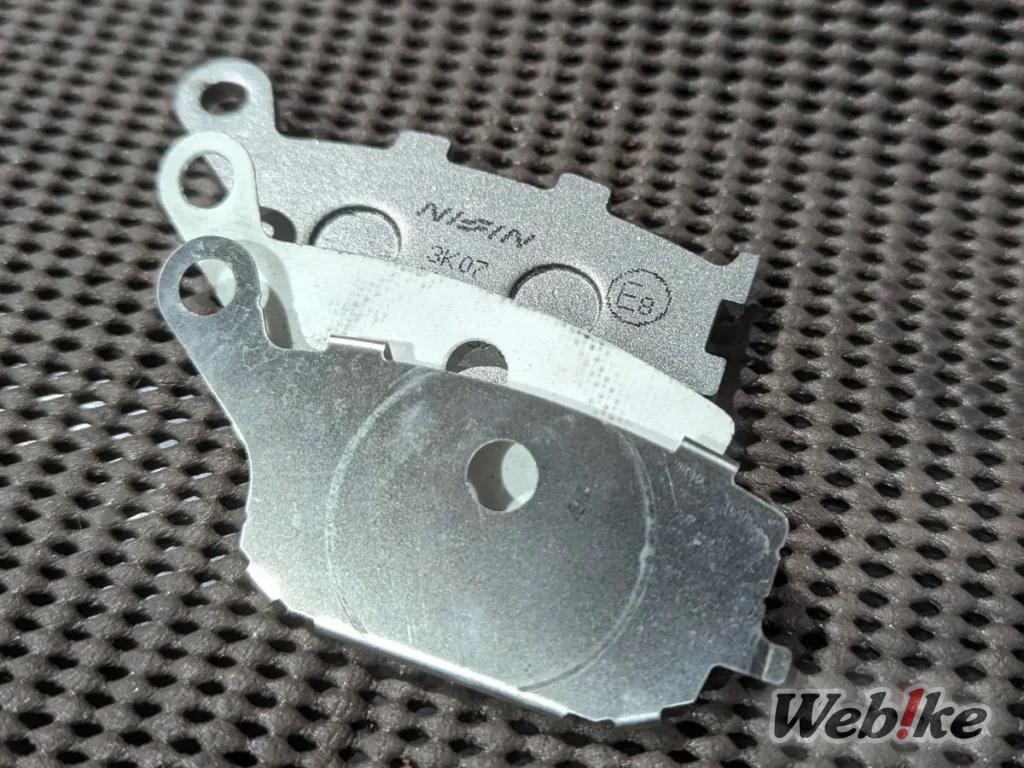
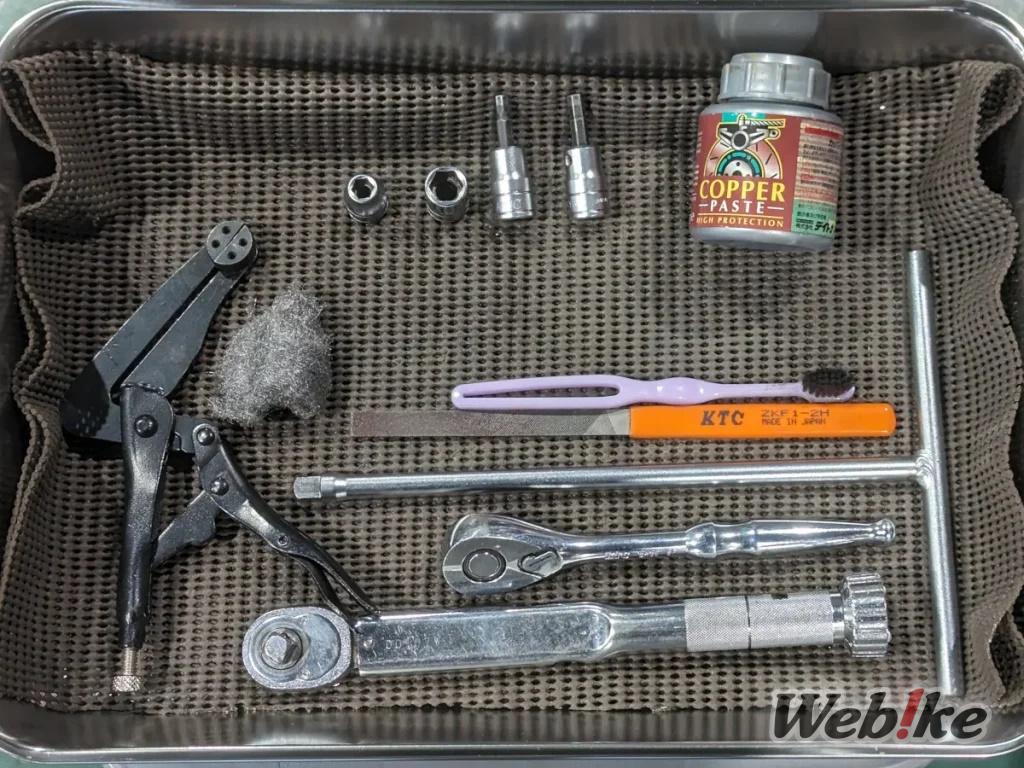
No brake noise, braking power equal to or better than stock, and good control!
Since the bike had low mileage, the disc rotors had almost no wear, and the "breaking-in" process to acclimate the contact surfaces of the rotors and pads was completed in a relatively short distance. In order to test the brake feeling, we test-drove the bike mainly on highways and in the city.
Urban Area
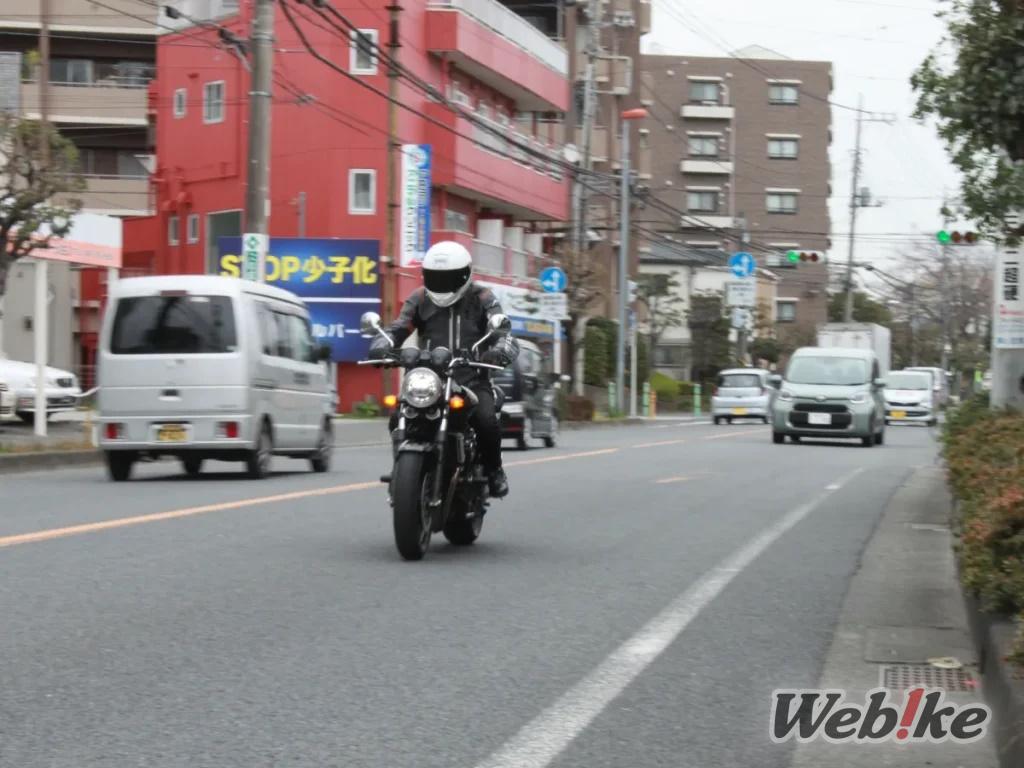
The feeling was very natural. When applying the brakes up to about 10%, the control is very close to stock. There is no clunky bite. We thought that the semi-metallic type would have less braking power, but it actually had more braking power than the stock sintered type. Since the control was gentle from the beginning, it felt very natural.
The difference from stock was clearly felt around 15% to 40%. In this range (e.g., braking to stop when the light turns yellow on a highway at 60 km/h), the braking force was greater than stock, so the reduction in the force necessary to be applied by the fingers may result in an easier ride. Heavier bikes, such as liter class, would benefit more from this, as this braking range is used often.
The rear brake uses a sintered type for stock, and the new pad had equal or better braking power. We tested the difference in pedal force by applying the brakes heavily until the ABS intervened and there was almost no difference from stock. The rear brake on the CB400SF has good feeling to begin with, but the new pads further enhance operability. When releasing the brake, there is no sticking feeling, and it can be released very naturally.
Riding in the rain
Though only once, we had the opportunity to test-drive in the rain on a wet surface. Since the initial brake feeling is gentle, the brakes were easy to operate even in the rain, and we felt that the performance was equal to or better than stock.
Hard Braking
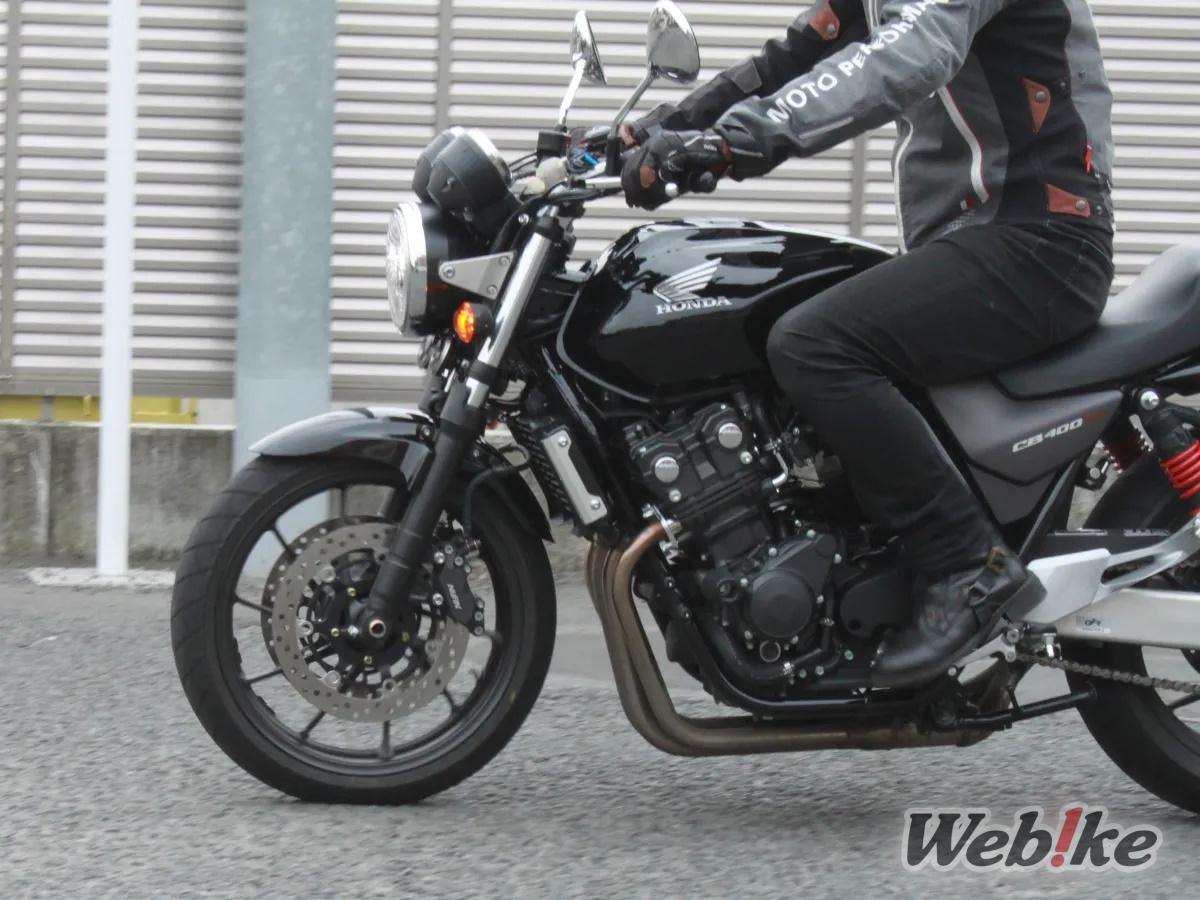
When entering a turn going downhill or during emergency braking, as mentioned above, the stock pads on the front brake had a hard feel and noise that felt as if the discs were grinding, but the NISSIN Premium Pads were different. We had heard that the material is less abrasive to the disc, but were surprised when it completely got rid of this problem. We didn't expect this result from just changing the pad material. In addition, when we tested full braking, we had the impression that the braking force was equal to or better than that of the stock pads. In general, we were impressed by the fact that the feeling in the middle range, which is often used when riding in the city or touring, has been strengthened.
In conclusion
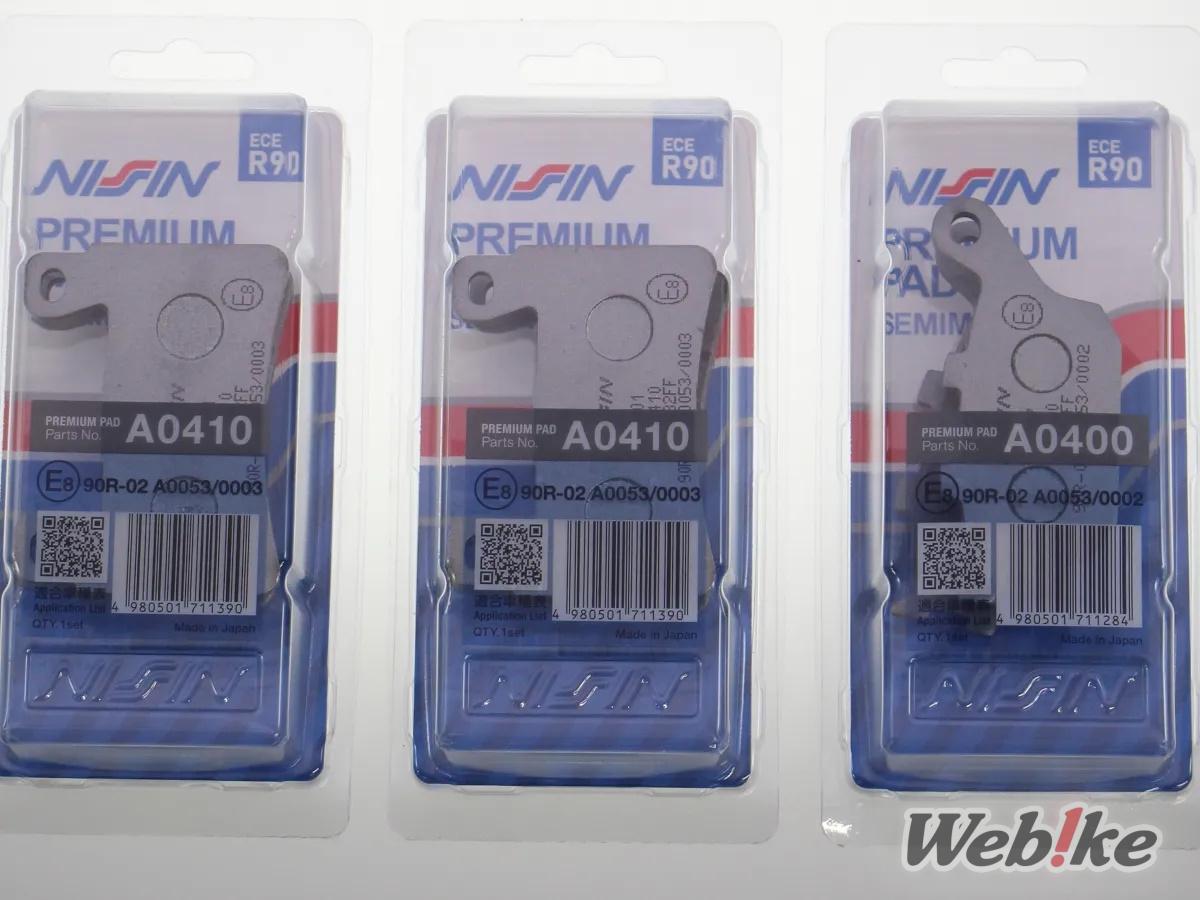
Compatibility: 49 types, compatible with approx. 1000 models
Price: From 3,630 JPY (including tax)
These replacement brake pads for street use, developed by a brand which specializes in brakes, have excellent control in mid-range braking force and a good feeling when braking hard. The pads are reasonably priced, and are less expensive than stock, making them cost-effective. We recommend these pads not only for those who mainly ride for touring and city use, but also those who do not yet have a favorite brand and don't know which one to choose, or those who want to experience the quality of NISSIN brake pads as aftermarket parts.
Non-brand, inexpensive pads may have you worried about safety, and pads designed for competition may not be suitable for street riding in terms of abrasion resistance, temperature dependence, and rain characteristics because they are focused on specific usage scenarios. The fact that NISSIN Premium Brake Pads have been developed for this category, where there are many rivals, with reasonable pricing and braking performance superior to that of the stock pads is the reason why the author feels that this is "big news".
Riders should choose brake pads according to their needs. In other words, we would like to emphasize that brake pads, like tires, should be compared and selected based on the way you use your machine, and that choosing correctly is one of the ways to enjoy motorcycle life.
editor
Yo
Webike Japan's global merchandiser who is passionate about motorcycles. Born in Japan, and spent his childhood in the US. 25 years of riding experience mainly on the tarmac and motorcycle market. He loves products made in Japan and considers himself a "Japan Parts evangelist".









![[New Product] High quality press molded Big Cedar Aluminum Fuel Tank for the SR400!](http://global-fs.webike-cdn.net/@japan/magazine/wp-content/uploads/2025/07/big-cedar_sr400-tank_01-1024x768.jpg?v=1752557544)